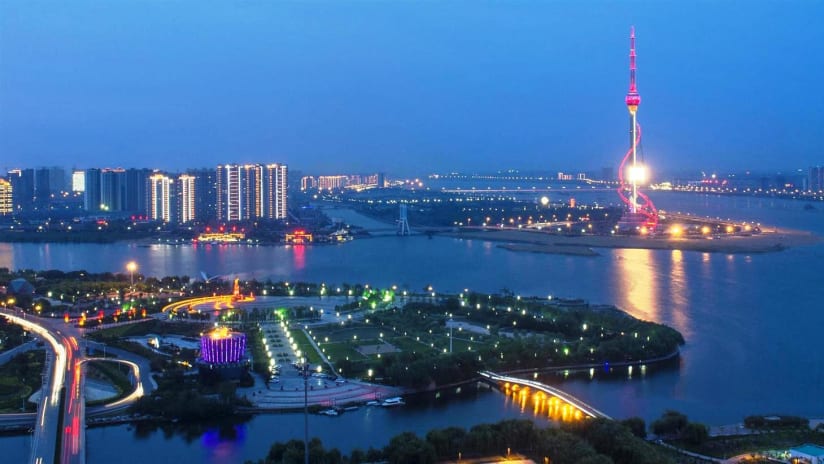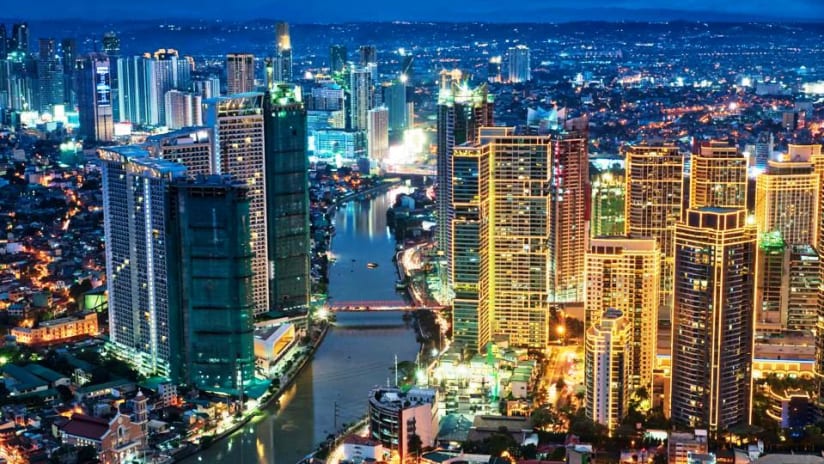HOST CITIES – 2024 Volleyball Challenger Cup
The men’s 2024 Volleyball Challenger Cup takes place from July 4 to 7 in Linyi, a city of about 11 million people in eastern China, situated in the south of the Shandong province, about halfway between Chinese megalopolises Beijing and Shanghai. Linyi is a newcomer to the international volleyball hosting scene. It welcomes the Volleyball Challenger Cup participants to the Linyi Olympic Sport Park, inaugurated in 2016.
It is the first time in history, the Volleyball Challenger Cup is held in China and the third consecutive time it is held in Asia, after Seoul 2022 and Doha 2023.
The name of the city literally means "close to the Yi River". Linyi, often referred to as Yi, is located in the transition zone between the Yimeng Mountain area and the Yishu River plain, and the terrain is high in the north and low in the south. With history of 2,400 years, the city recently expanded along the Yi River to Nanfang, now called the Beicheng New Area, under the slogan "Grand Linyi, Beautiful Linyi, New Linyi". Multiple recreational parks were built, along with new school campuses, etc. The development is a consequence of a series of governmental projects, expected to stimulate the economy. Linyi is served by Linyi Qiyang Airport. The city is near the G2 Beijing–Shanghai Expressway as well as the Eurasian Land Bridge. The urban area covers 17,184 square kilometres.

Linyi's economy is based around its wholesale markets. The Linyi Wholesale City is ranked third in its category in China. The main industrial products include textiles, food, machinery, electronics, chemicals, construction materials, coal, medicines, gold, china, fertilizers.
Linyi has a monsoon-influenced climate with generous summer precipitation, cold and dry winters, and hot and humid summers. More than half of the annual precipitation falls in July and August alone.
Langya Ancient City is a must-see attraction in Linyi. As night falls, visitors can witness renowned historical figures re-enacting history before their eyes, offering a captivating journey through time.
Linyi's focal point is the People's Square (Renmin Guangchang). It was built in the early 1990s on the site of old army barracks. Underneath it there are a shopping centre and entertainment facilities. Just north of the city centre is a park dedicated to the great calligrapher Wang Xizhi. Near the centre of Linyi city, there is a museum, which houses some original bamboo strips from the Warring States period. The Linyi Water Rhythm Langya is a large water recreation attraction.
Manila
Manila, the capital of the Philippines, sets the stage to the women’s 2024 Volleyball Challenger Cup from July 4 to 7. The event is held at the iconic Ninoy Aquino Stadium, an indoor sporting arena with a seating capacity of 6,000 located in the Rizal Memorial Sports Complex. Originally built in the 1950s, it was renovated in 1989. It hosted the volleyball tournament of the 1991 Southeast Asian Games and many other volleyball battles, most recently the women’s AVC Volleyball Challenge Cup in May 2024, which served as a continental qualifier for the Volleyball Challenger Cup. It is the first time in history, however, the women’s Volleyball Challenger Cup is held in Asia.
Manila is the capital and the second most populous city of the Philippines. It is also among the fastest developing cities in Southeast Asia. Located on the eastern shore of Manila Bay on the island of Luzon, some 1,300 km from mainland Asia, it is classified as a highly urbanized city. It is considered the world's most densely populated city. The city proper is home to about 1.9 million people.
Maynila, the Filipino name for the city, means "where indigo is found", referring to several plant species from which this natural dye can be extracted. The name Maynila was probably bestowed because of the indigo-yielding plants that grow in the area.
Manila is situated in a variety of ecosystems including upland forests, mangrove forests, mudflats, sandy beaches, sea grass meadows and coral reefs. It is home to urban parks, nature parks, plazas, nature reserves, and an arboretum. The protected harbour on which Manila lies is regarded as the finest in Asia. The Pasig River flows through the middle of the city, dividing it into north and south sections.

Manila lies entirely within the tropics and has a tropical monsoon climate. Its proximity to the equator means temperatures are high year-round especially during the daytime, rarely going below 19 °C or above 39 °C. Humidity levels are usually very high all year round, making the air feel hotter than its actual temperature. In the wet season, rain rarely falls all day, but rainfall is very heavy for short periods. Typhoons usually occur from June to September.
The earliest evidence of human life around present-day Manila is dated to around 3000 BC. Manila's mix of architectural styles reflects its and the Philippines' turbulent history. Manila's current urban landscape is one of modern and contemporary architecture.
Manila is a major centre for commerce, banking and finance, retailing, transportation, tourism, real estate, media, advertising, legal services, accounting, insurance, theatre, fashion and arts.
It welcomes over one million tourists each year. Major tourist destinations include the historic Walled City of Intramuros, the Cultural Centre of the Philippines Complex, Manila Ocean Park, Binondo (Chinatown), Ermita, Malate, Manila Zoo, the National Museum Complex, and Rizal Park, also known as Luneta Park, which is a national park and the largest urban park in Asia. As the cultural centre of the Philippines, Manila offers a number of museums.
Manila is regarded as one of the best shopping destinations in Asia, with major shopping malls, department stores, markets, supermarkets and bazaars located within the city.

